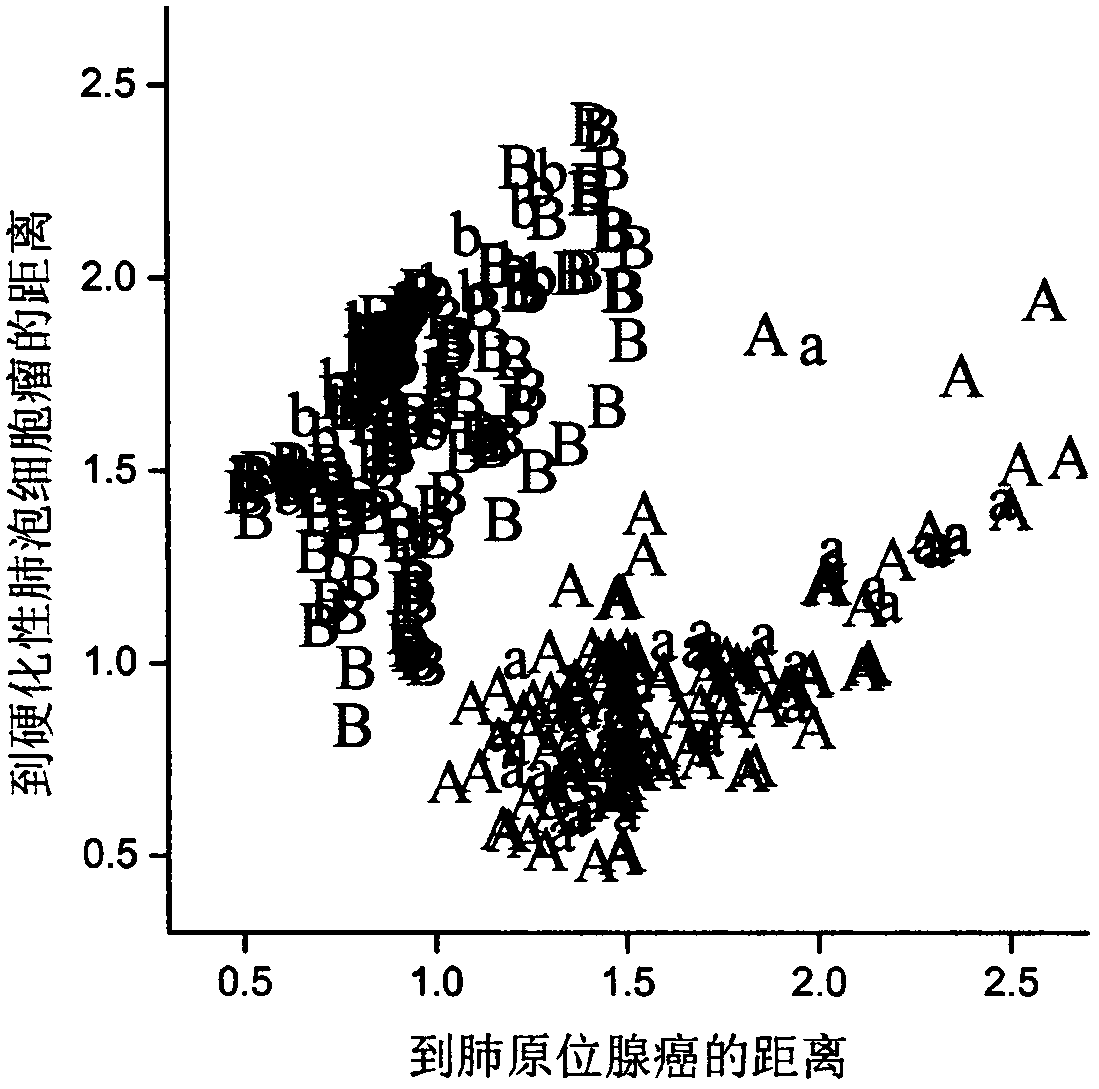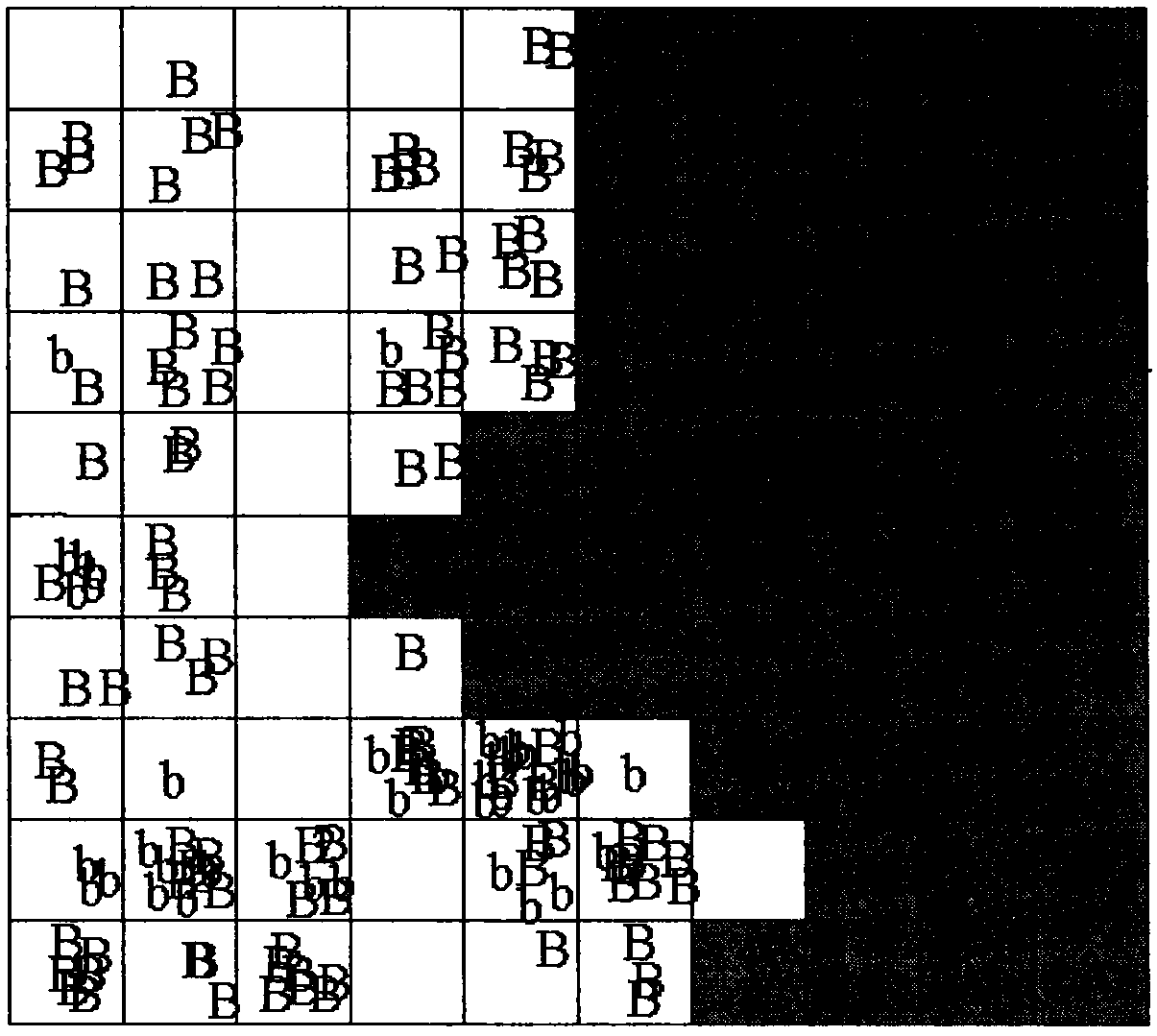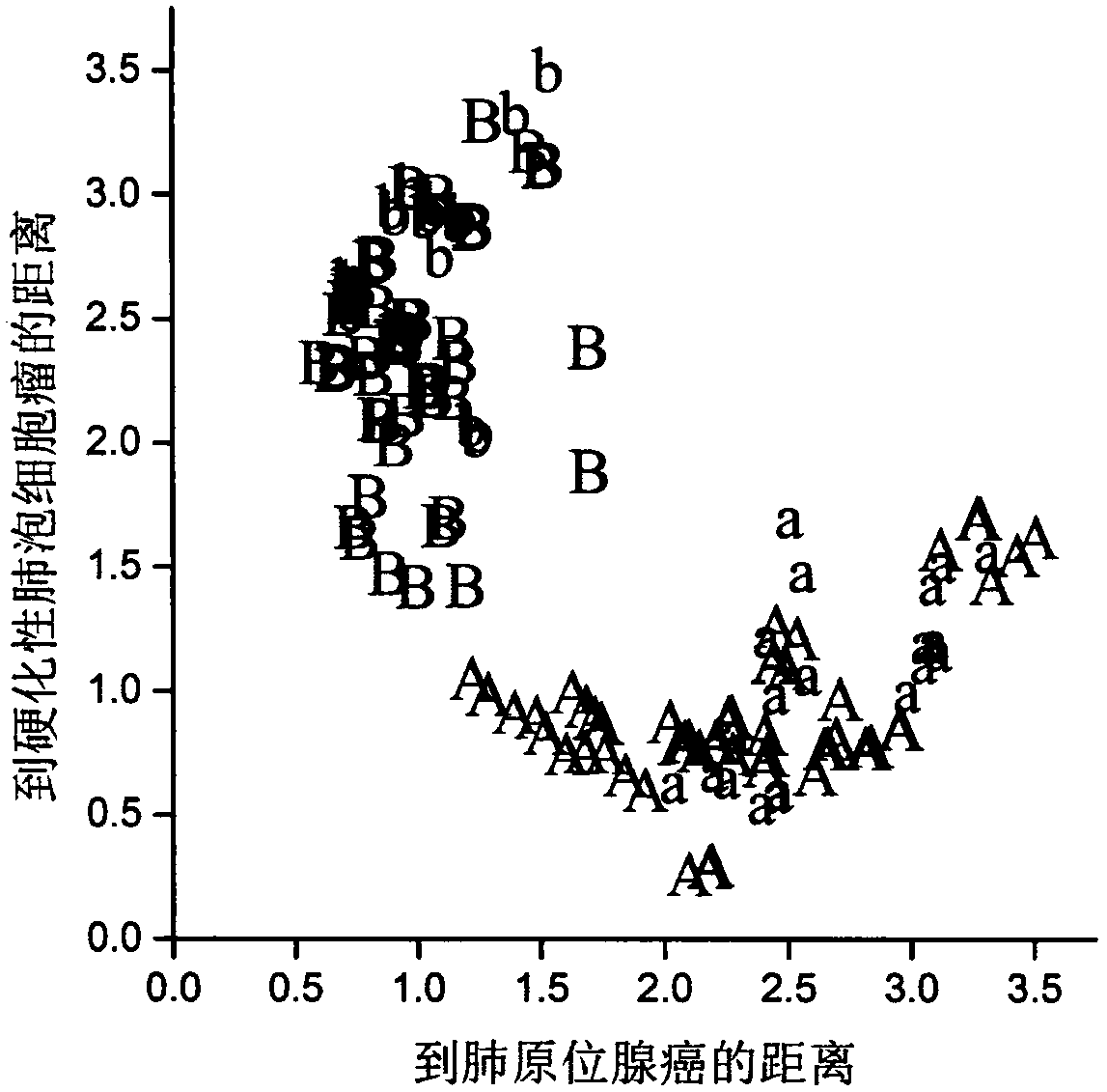Method used for differentiating benign tumor and malignant tumor based on infrared light spectrums
A malignant tumor and infrared spectroscopy technology, applied in the field of prediction of tumor properties, can solve problems such as different treatment plans and prognosis, confusion, and difficulties in the pathological diagnosis of lung adenocarcinoma in situ, to overcome spectral interference, improve accuracy, Favorable Effects for Diagnosis
- Summary
- Abstract
- Description
- Claims
- Application Information
AI Technical Summary
Problems solved by technology
Method used
Image
Examples
Embodiment 1
[0032] Example 1 A method for distinguishing benign and malignant tumors based on infrared spectroscopy (including unstained paraffin sections and HE-stained sections)
[0033] 1. Collection of samples
[0034] A total of 100 tumor tissue sections from different patients in hospital 1 and 2 were collected. Among them, 50 sclerosing alveolar cell tumor tissue sections included 25 unstained paraffin sections and 25 HE-stained sections, and 50 lung adenocarcinoma in situ tissue sections included 25 unstained paraffin sections and 25 HE-stained sections.
[0035] 2. Spectral measurement
[0036] After preheating the infrared spectrometer for 2 hours, set the spectral measurement parameters: resolution 8cm -1 , Scan times 64 times, scan range 4000 ~ 1900cm -1 , measure the infrared transmission spectrum of each slice, scan with the same parameters before each scan and subtract the background, and measure a spectrum at 3 different positions for each slice, sclerosing alveolar cel...
Embodiment 2
[0053] Example 2 A method for distinguishing benign and malignant tumors based on infrared spectroscopy (only including unstained paraffin sections)
[0054] 1. Collection of samples
[0055] The tumor tissue sections used in this example were the unstained paraffin sections collected in Example 1.
[0056] 2. Spectral measurement
[0057] With embodiment 1.
[0058] 3. Extraction and modeling of spectral characteristic variables
[0059] (1) Selection of spectral pretreatment scheme
[0060] In order to make the built model have excellent predictive performance, various spectral preprocessing techniques including NP, MSC, SNV, FD, SD, SGS, and NDS were screened and combined, as shown in Table 3 and Table 4. The results show that when the obtained spectra are preprocessed by NP or SGS, the prediction performance of the model is the best, such as model 1 in Table 3; model 1 in Table 4.
[0061] (2) Selection of modeling spectral range
[0062] Using the above-mentioned op...
Embodiment 3
[0074] Example 3 A method for distinguishing benign and malignant tumors based on infrared spectroscopy (only HE stained sections are included)
[0075] 1. Collection of samples
[0076] The tumor tissue sections used in this example were the HE-stained sections collected in Example 1.
[0077] 2. Spectral measurement
[0078] With embodiment 1.
[0079] 3. Extraction and modeling of spectral characteristic variables
[0080] (1) Selection of spectral pretreatment scheme
[0081] In order to make the built model have excellent predictive performance, various spectral preprocessing techniques including NP, MSC, SNV, FD, SD, SGS, and NDS were screened and combined, as shown in Table 5 and Table 6. The results show that when the obtained spectra are preprocessed by NP or SGS, the prediction performance of the model is the best, such as model 1 in Table 5; model 1 in Table 6.
[0082] (2) Selection of modeling spectral range
[0083] Using the above-mentioned optimal spectra...
PUM
 Login to View More
Login to View More Abstract
Description
Claims
Application Information
 Login to View More
Login to View More - R&D
- Intellectual Property
- Life Sciences
- Materials
- Tech Scout
- Unparalleled Data Quality
- Higher Quality Content
- 60% Fewer Hallucinations
Browse by: Latest US Patents, China's latest patents, Technical Efficacy Thesaurus, Application Domain, Technology Topic, Popular Technical Reports.
© 2025 PatSnap. All rights reserved.Legal|Privacy policy|Modern Slavery Act Transparency Statement|Sitemap|About US| Contact US: help@patsnap.com



